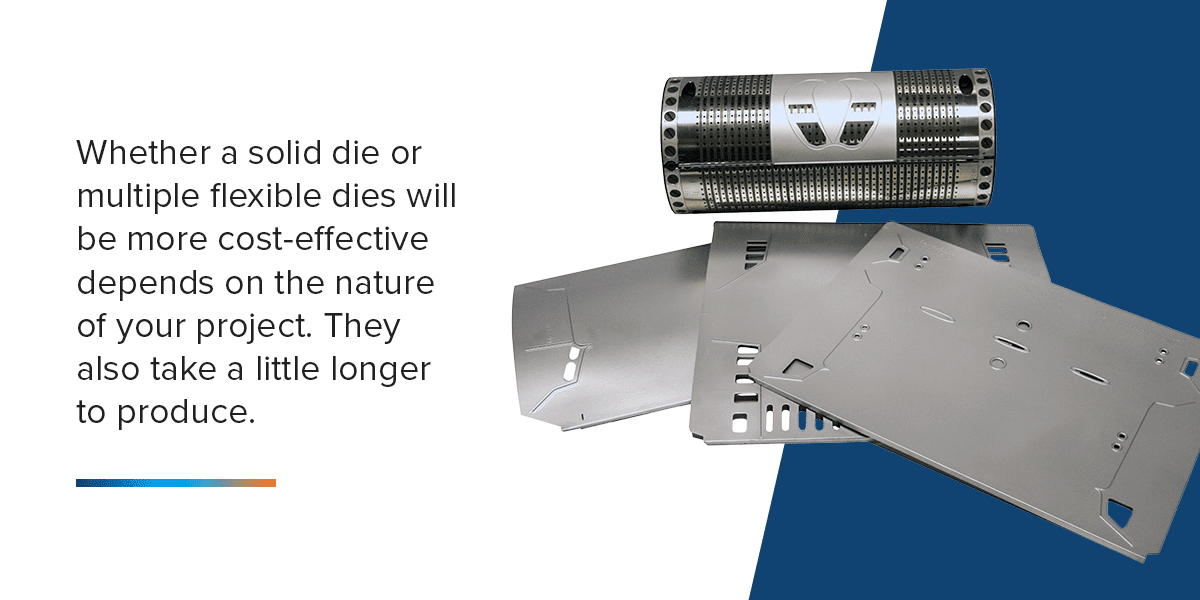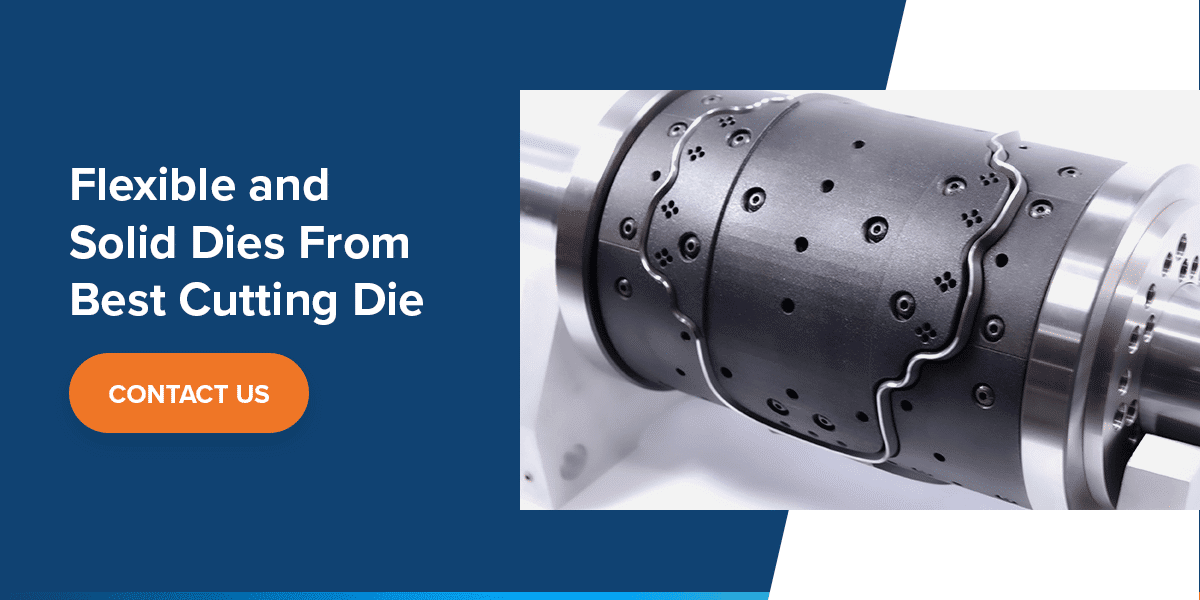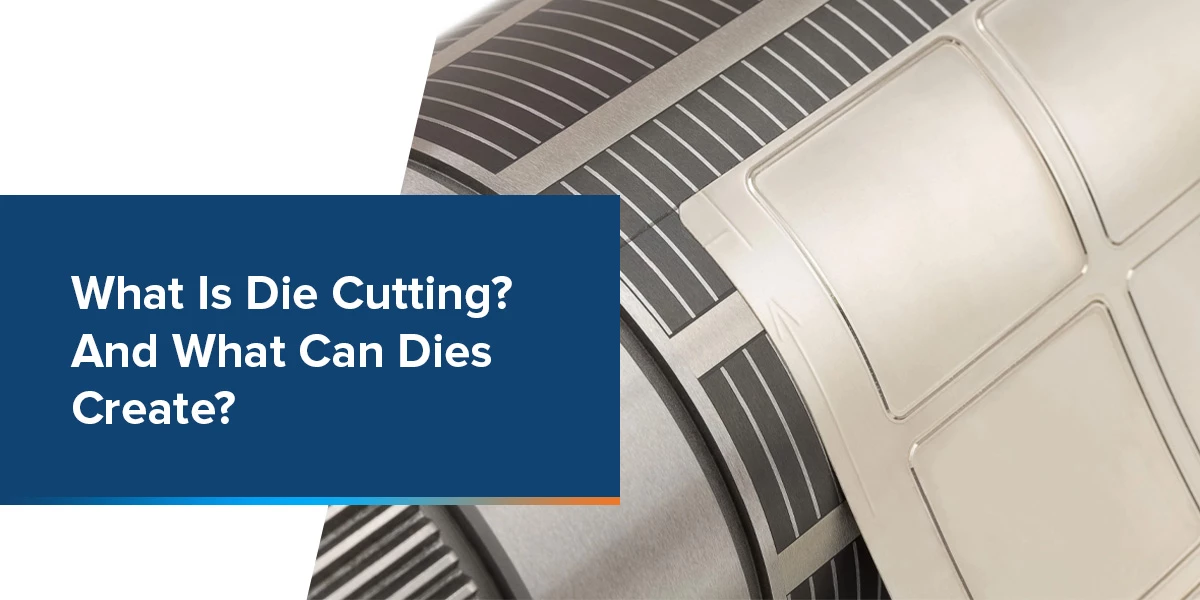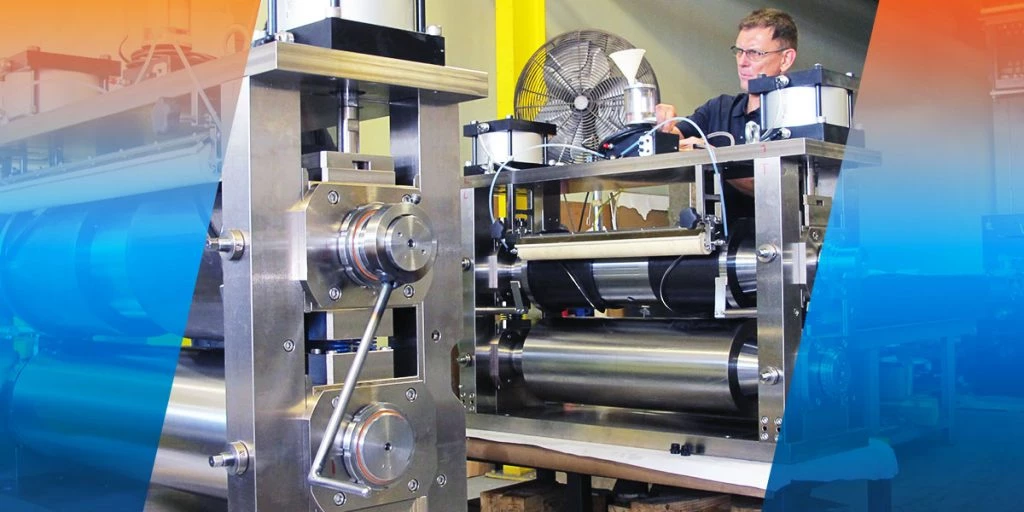What’s the Difference Between Solid and Flexible Dies?
In the world of rotary die-cutting, solid and flexible dies are both excellent options for achieving precise cuts and high productivity. Still, each one has its place in different businesses and projects. Solid dies offer the necessary durability for long-run projects and harder materials, while flexible dies are cost-effective and great for shorter runs.
Let’s take a closer look at what flexible dies are used for, what solid dies are used for, and how to choose the best option for your project.
What Does a Cutting Die Do?
Flexible and solid dies are two types of cutting die. These are the cutting surfaces used in a rotary die-cutting machine. These machines roll a cylindrical die over the material, pressing it into a solid surface and cutting the material into the shape of the die.
In addition to cutting out shapes, die-cutting can also make perforations and creases. Rotary die-cutting can offer excellent precision and productivity, and it is great for high-speed and high-volume production. Rotary die-cutting is also highly efficient and minimizes material waste.
Die-cutting can be used on a wide range of materials, including:
- Paper
- Plastic
- Metal
- Fiberboard
- Some food products
The continuous nature of die-cutting means that there’s less downtime associated with starting and stopping presses or a stamping process. Die-cutting is used in everything from packaging and clothing to labels and plastic components.
When Are Flexible Dies Used?
Flexible dies are sheets of steel that attach to a solid magnetic cylinder. They attach securely and are suitable for some of the most common substrates with little rigidity, like paper and films. Flexible dies are more cost-effective than solid dies and have faster turnarounds. They also take up less space. One reason flexible dies are popular is due to their high compatibility. They work well on some of the most commonly used materials, are easy to swap out, and are designed to fit various die-cutting machines.
You’ll need a magnetic cylinder or shell to use a flexible die. These base components must fit the specifications of your die-cutting machine. Magnetic cylinders work directly in the machine, while magnetic shells mount on existing shafts and allow you to use one with a flexible die.
If you’re working with difficult substrates such as matte paper, full-coverage ink or abrasive materials like hybrid vellum, you may need a specially treated flexible die. Here at Best Cutting Die, we offer a chrome plating option that can cut through these tougher materials and boost the life of the die up to five times. The extra hardness is great for longer runs, greater lubricity and reducing paper dust. These treatment options allow for a middle ground between a typical flexible die and solid dies.
Flexible dies are also useful when you need a die ASAP — we can manufacture them in less than a day. Plus, they’re easier and cheaper to ship since they’re thin and lighter in weight than solid dies.

When Are Solid Dies Used?
Solid dies, on the other hand, have the cutting design permanently machined onto a solid steel cylinder. These dies are more rigid and durable, built for long-lasting use. They can stand up better to tough production environments, like high pressure and abrasive materials. You can even resharpen them to extend the lifespan of the die, making them last much longer than flexible dies.
Solid dies are typically used for longer production runs and offer better performance on tougher materials such as:
- Metals
- Multi-layer substrates
- Substrates with adhesives
- Abrasives
- Gaskets
Solid dies are slightly more customizable, thanks to the many types of steel available. Steel alloys are plentiful, using other elements like tungsten, silicon, molybdenum and chromium to add desired characteristics to a solid die. As with flexible dies, they can also support treatments, such as heat treatments and coatings. The design of the cutting blade can also be configured to best suit the substrate being cut.
Scrap removal is another factor for which you might turn to solid dies. They can be combined with features like air ejection and vacuums for easier waste removal. They may also help reduce downtime since you’re less likely to need to replace them during a production run. Keep in mind that changeover takes longer with solid dies.
Some drawbacks of a solid die include its larger size and cost. The larger cylinders take up more storage space, and the higher initial cost may affect its profitability. Whether a solid die or multiple flexible dies will be more cost-effective depends on the nature of your project. They also take a little longer to produce.
Things to Consider When Choosing a Cutting Die Style
While comparing solid vs. flexible dies, run through your project and consider your needs for:
- Turnaround time: Flexible dies offer a faster turnaround time, generally in a day or two.
- Length of production run: If your run will be short, a flexible die is likely more cost-effective. Longer runs might be better suited to solid dies.
- Substrate: Thin, less-rigid materials like paper and films work well with flexible die, but tougher substrates will likely need a solid die.
- Durability: Will replacing worn-out flexible dies be an issue for your production line, or would you rather have the high durability and resharpening capabilities of a solid die? Consider the faster changeover speed of flexible dies, too.
- Storage space: If you’re short on space, flexible dies are easier to store and take up less room.
Assess the entire project and how the different options will affect your budget. For example, would spending more on a solid die be appropriate for a short production run with an adhesive material? With the short production run, it may be most cost-effective to use a treated flexible die. If you’re not sure what your project needs, talk to a professional.

Flexible and Solid Dies From Best Cutting Die
Here at Best Cutting Die, we offer high-quality solid and flexible dies, along with the magnetic cylinders and shells required for the flex dies. With sophisticated cutting equipment and comprehensive quality control processes, Best Cutting Die can handle all of your flexible and solid die fabrication needs. Some products we specialize in include envelopes, labels, packaging and medical and personal supplies.
Along with production, we offer a comprehensive design and quote studio and a range of training options to help you use your dies for maximized performance and lifespan. Reach out to us to learn more about using our flexible and solid dies in your next project!



